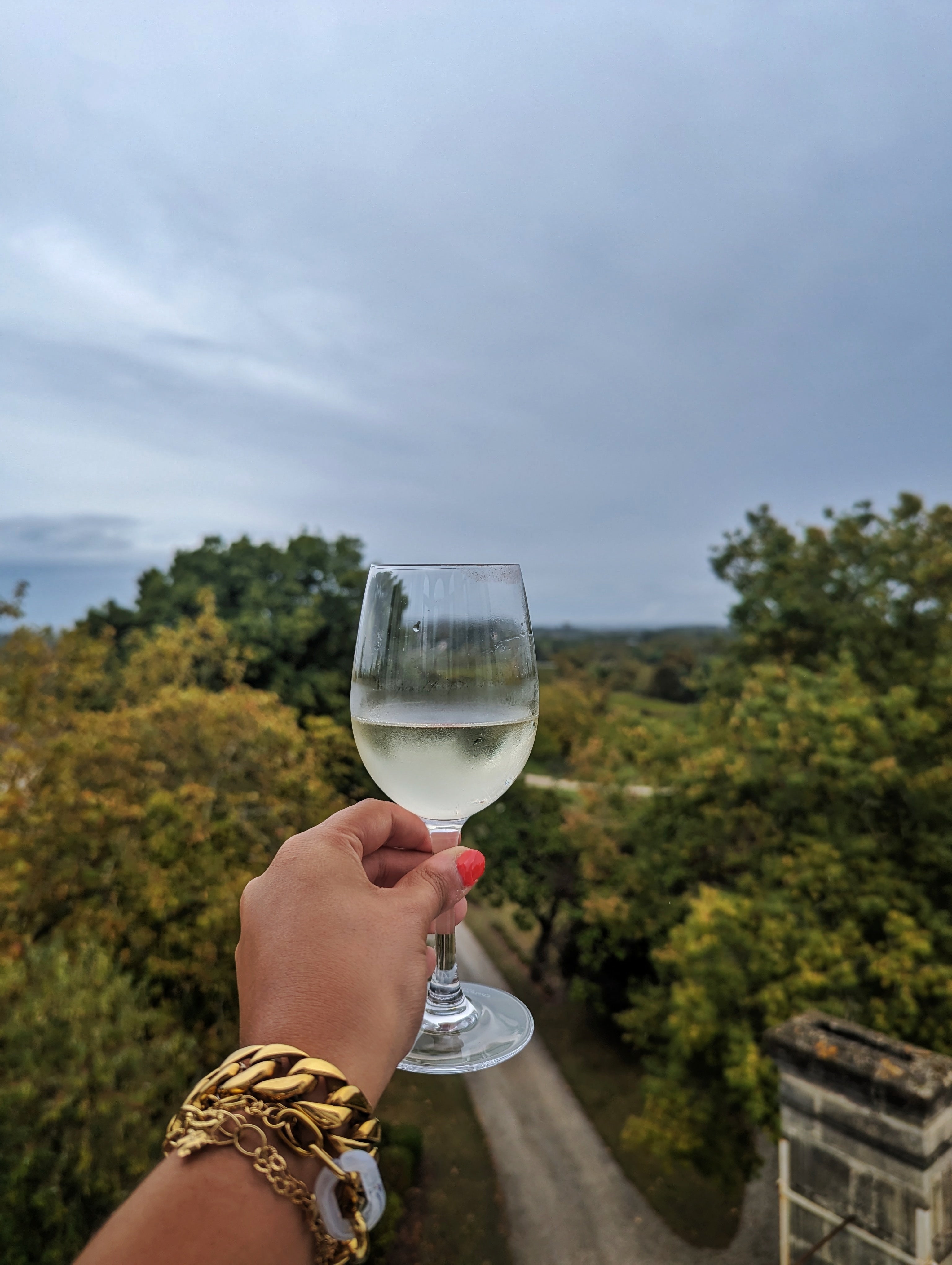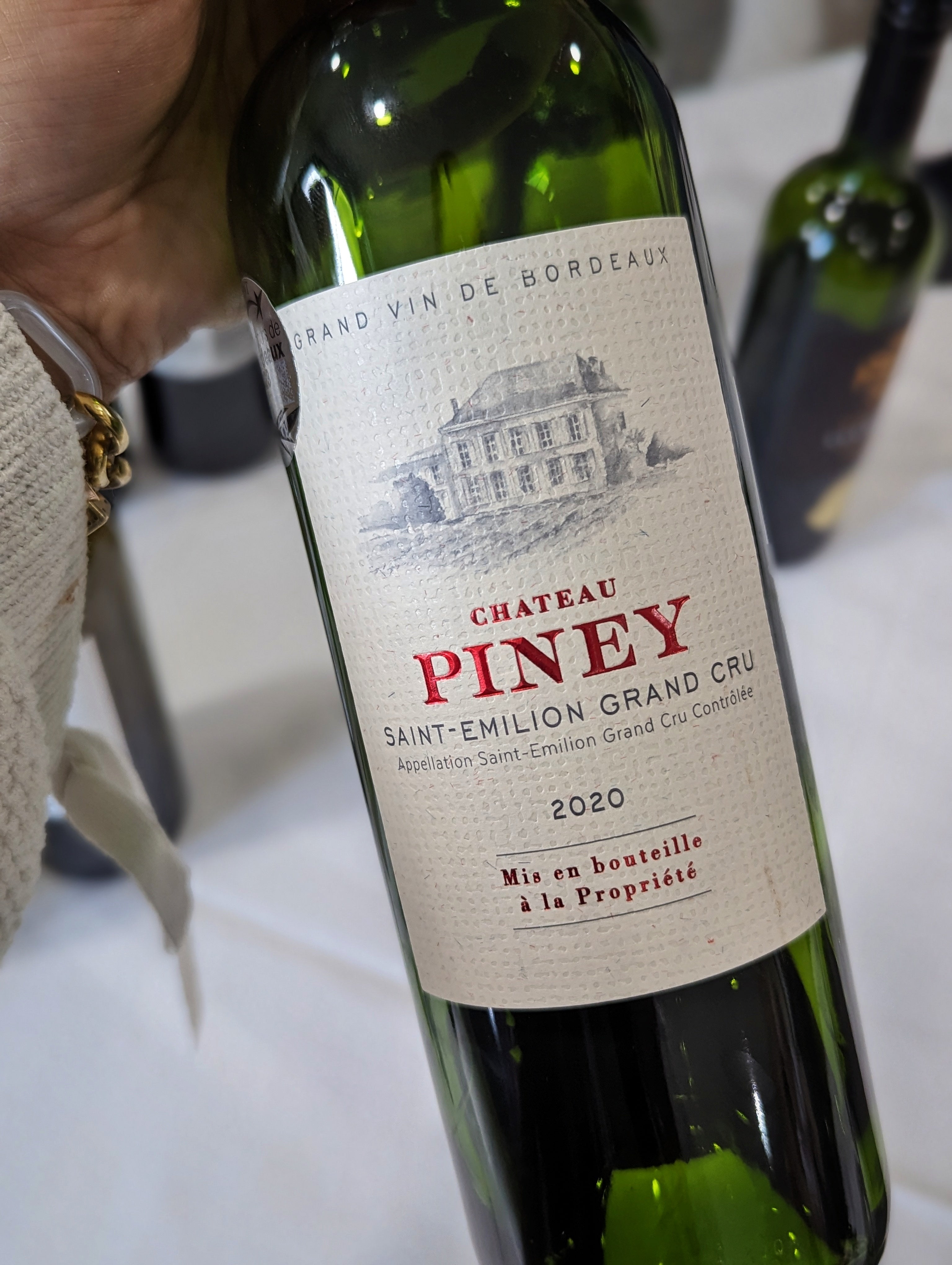
Bordeaux is one of the most renowned wine regions in the world. It has been producing wine since Roman times – and, over the centuries, the region has perfected the art. The climate is just about perfect for viticulture, with mild winters, warm summers and a balanced amount of rainfall. A unique microclimate, thanks to the Gironde estuary, along with the Dordogne and Garonne rivers, makes Bordeaux wines particularly distinctive to the palate.
The name alone conjures images of sun-drenched vineyards, centuries-old châteaus and, of course, the elegant wines that have made this French region world-famous. But here’s the thing – while Bordeaux is often associated with luxury and eye-watering price tags... you don’t actually need to be a earning the big bucks to enjoy it. In fact, you can explore some exceptional bottles without spending a fortune – especially if you know where to look.
The region is known for its red wines, made predominantly from Merlot, Cabernet Sauvignon and Cabernet Franc. But don’t overlook the whites. Sauvignon Blanc, Sémillon and Muscadelle all play starring roles in the region’s crisp, refreshing white wines.
Red Bordeaux wines are often divided into two main styles based on geography: the Left Bank and the Right Bank. The former, which includes famous areas like Médoc and Graves, is known for Cabernet Sauvignon-dominant blends, with these wines tending to be structured, tannic and perfect for ageing. On the other hand, the Right Bank, which is home to appellations like Saint-Émilion and Pomerol, leans more towards Merlot – producing softer, fruitier wines that can often be enjoyed a bit younger.
The whites, especially those from Graves and Pessac-Léognan, can be stunningly complex and refreshing. These wines often have zesty citrus notes balanced by richer, honeyed flavours, especially when aged.
Now, let’s talk about how to enjoy these glorious wines without denting your bank account. Enter Lidl. Yes, you read that right – it might shock you to learn that the same supermarket where you pick up your weekly wallet-friendly groceries also happens to have a surprisingly good selection of Bordeaux wines. Lidl’s wine buyers have a knack for scouting out excellent bottles at very affordable prices, making it possible to enjoy Bordeaux without feeling guilty.
Lidl’s wines range in price from around a fiver up to £15, for its more premium bottles. Part of the biggest supermarket group in Europe, the retailer has considerable buying power.

According to Richard Bampfield, the retailer’s Master of Wine, “Bordeaux is known for making some of the world’s finest and most expensive wines. And, as these wines receive a lot of media attention, that can give the impression that all Bordeaux is expensive.”
In fact, nothing could be further from the truth: most Bordeaux is sold at far more humble price points, with the Bordeaux (£4.99) and Bordeaux Supérieur (£5.99) sold in Lidl being good examples.
“Also, declining wine consumption in France, which is the biggest market for Bordeaux, means that prices for most Bordeauxes have barely risen at all in recent years,” says Bampfield. “And it should be remembered that not all Bordeaux is red – for lovers of Sauvignon Blanc, Bordeaux’s dry whites, which are typically made from this fashionable grape, offer excellent quality and value for money.”
Whether it’s a red from the Côtes de Bordeaux or a crisp white from Entre-Deux-Mers, Lidl offers a range that allows you to explore the region’s diversity without breaking the bank. It’s the perfect way to experience Bordeaux on a budget.
From grape to glass: The Bordeaux winemaking process
The journey of a Bordeaux wine from grape to glass is a meticulous one. It all starts in the vineyard, where the vines are carefully tended throughout the year. The grapes are typically harvested in late September to early October, depending on the weather and the specific varietal.
Once harvested, the grapes are sorted and destemmed before fermentation begins. For red wines, the juice is fermented with the grape skins to extract colour, tannins and flavour. This process can take anywhere from a few days to several weeks, depending on the desired style of the wine.
After fermentation, the wine is often aged in oak barrels, which adds depth and complexity. The ageing process can vary – some wines are aged for just a few months, while others might spend several years in barrel before they’re bottled.
Once the wine is bottled, it’s ready to be enjoyed, but don’t be surprised if it continues to improve with a bit of time. Even budget-friendly Bordeaux wines (like those you can pick up for a tenner in Lidl) can benefit from a little patience, allowing their flavours to develop and mature.
Château Mirefleurs

Nestled in the heart of the Bordeaux Supérieur appellation, Château Mirefleurs is known for producing elegant and approachable reds. Their wines often showcase the classic Merlot-dominant style of the Right Bank – think ripe plum, blackcurrant and a hint of spice. It’s the kind of wine that’s perfect for an evening in, paired with a hearty meal (perfect as the weather cools down).
Château La Couspaude
Over in Saint-Émilion, Château La Couspaude is a gem. This family-owned estate produces rich, full-bodied wines with layers of complexity. Expect flavours of dark berries, chocolate and a touch of earthy minerality. While wines from this château can sometimes be a bit pricier, Lidl occasionally offers bottles at a fraction of what you’d pay elsewhere. Bargain Bordeux? Don’t mind if we do.
Château Loudenne
Known as “The Pink Château”, Château Loudenne sits by the banks of the Gironde River and comes with an impressive history that stretches back to the 17th century. They produce both red and white wines, with their whites being particularly noteworthy. Made primarily from Sauvignon Blanc and Sémillon, these wines are fresh, zesty and perfect for summer sipping. We’ll see you at the checkout.
Château Piney

Château Piney is one of the world’s most famous wine regions located in the charming area of Saint-Émilion. This estate has everything you’d expect from a classic Bordeaux vineyard: stunning views, rich history and, of course, some seriously good wine. The vineyard’s unique combination of soil and climate makes for wines that are beautifully balanced and full of character. Whether you’re a seasoned wine lover or just someone who enjoys a good glass now and then, Château Piney’s offerings are sure to impress.
But what makes Lidl’s Bordeaux selection so special? According to Bampfield, it’s all about relationships – Lidl works directly with producers, often dealing with the bigger suppliers, which allows them to pass on the savings to consumers. “Lidl has a major presence in France where most Bordeaux is sold – so has an excellent, long-standing relationship with many of the producers there,” he says. “Other Lidl markets benefit from this, both in terms of pricing and the range of wines on offer.” The retailer also has a keen eye for up-and-coming producers and lesser-known appellations, which means you can often find hidden gems on their shelves.
“Most UK supermarkets have much bigger wine ranges than Lidl but that does not necessarily make it easier for the customer to make their choice. Lidl would argue that it is actually harder to put together a limited range where a stricter quality selection is required – and a smaller, carefully selected range makes it easier for the customer to find the right wine.”
So next time you’re doing your weekly shop, take a detour down the wine aisle. You might just find your new favourite Bordeaux – at a price that’ll make you smile. Cheers to that!







